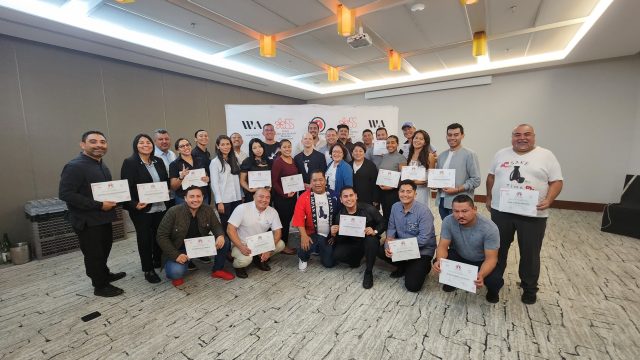JSS focuses on emerging markets with sake masterclass in Mexico
Sommeliers attended the Japan Sake and Shochu Makers Association’s academy in Mexico, further promoting the national drink to Latin America.


The Japan Sake and Shochu Makers Association (JSS) continued its series of international masterclasses, this time in Mexico. The non-profit organisation, which has recently promoted sake in other Latin American markets, conducted its first masterclasses in the country.
From 4-8 November 2023, the JSS ran Sake Academy Mexico in collaboration with Wine Academy by SM. The sessions in Los Cabos and Mexico City reached 68 sommeliers and hospitality professionals.
The JSS invited the winning sommelier in the final test of the academy to visit Japan this year. The trip will help them discover even more about the industry.
Driving demand
Mexico is an emerging market, but one that shows much potential for Japanese sake producers. Latin America currently receives around 1% of Japan’s volume sake exports, with 90% heading to either Brazil or Mexico. However, each has notably low consumption of wine, the beverage usually competing most closely with sake. With wine accounting for just 1.1% of the market by volume, there is little competition for sake as it grows its market share.
Mexico is also a compelling export proposition due to its Japanese communities. The country has had a large population of Japanese descent since the late 1800s, and is home to a number of Japanese businesses. Indeed, 2023 research from the Japanese Ministry of Agriculture, Forestry, and Fisheries indicates that Mexico has 7,120 Japanese restaurants, the fifth-largest figure outside Japan. The established Japanese culture provides a strong base for export growth.
There are, however, challenges in approaching the Mexican market. Many importers purchase through a US intermediary, rather than directly from Japan. This can raise prices, making it difficult to compete with the home-grown beer and tequila industries. If, on the other hand, importers wish to buy directly from Japan, the bottles must be shipped in a refrigerated container to protect the delicate product. This means smaller units of sake, such as a single palette, cannot be imported directly, limiting choices for buyers.
The JSS is therefore working to encourage growth in the market. In particular, by educating sommeliers, it intends to increase demand from restaurants and ensure that sake is remembered when writing a drinks list.

Educating the trade
Michael Tremblay, sake expert, sommelier, and James Beard Award-winning author, hosted Sake Academy Mexico. He commented, “the main challenge facing sake here is the lack of availability and the cost of importing sake. From the many individuals that attended the Sake Academies, it is clear there is an interest in sake and learning more about it! Having more sake available or making it easier for consumers and sommeliers alike to know where to purchase it is crucial to sake’s growth.”
Across the masterclasses (two days in each city), Tremblay made the most of the cohort’s enthusiasm. Although the base level of knowledge varied wildly, all were keen to explore the category. In particular, Tremblay highlighted the different approach required in food pairing with sake. As a product much higher in amino acids than wine, it has an umami quality that invites exciting pairings.
The masterclasses also explored key differences in production between wine and sake. Unlike wine, water must be used as a raw material in fermentation to brew sake. It makes up around 80% of the volume, and so has a marked effect on the final product. Attendees explored how different waters affect the taste in premium sakes.
As an even deeper dive into the world of sake, Tremblay guided the group through the concept of koji. He explained the process by likening it to beer brewing. Like barley, rice does contain starch but not the sugars needed for fermentation, and so must undergo saccharification before fermentation.
Koji acts analogously to the process of malting, transforming the grain into a fermentable product. In fact, koji refers to a specific mold grown on steamed rice. It releases enzymes that break down starch reserves in the grains, allowing it to be fermented.
As the final to each two-day sake academy, the attendees were tested on the criteria of sake service, blind tasting, image identification and flash cards. Two representatives from each region then progressed to a final in Mexico City. Alicia Ahuactzi from Rosewood Hotel Las Ventanas al Paraíso won the overall prize and will receive a trip to Japan.
Related news
Top 10 oldest sake producers in Japan (and the world)
